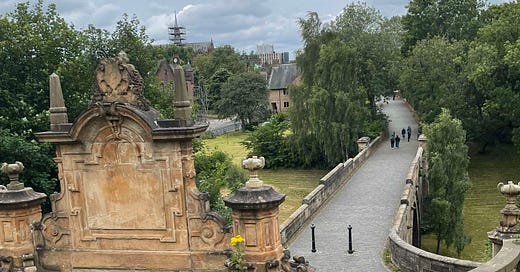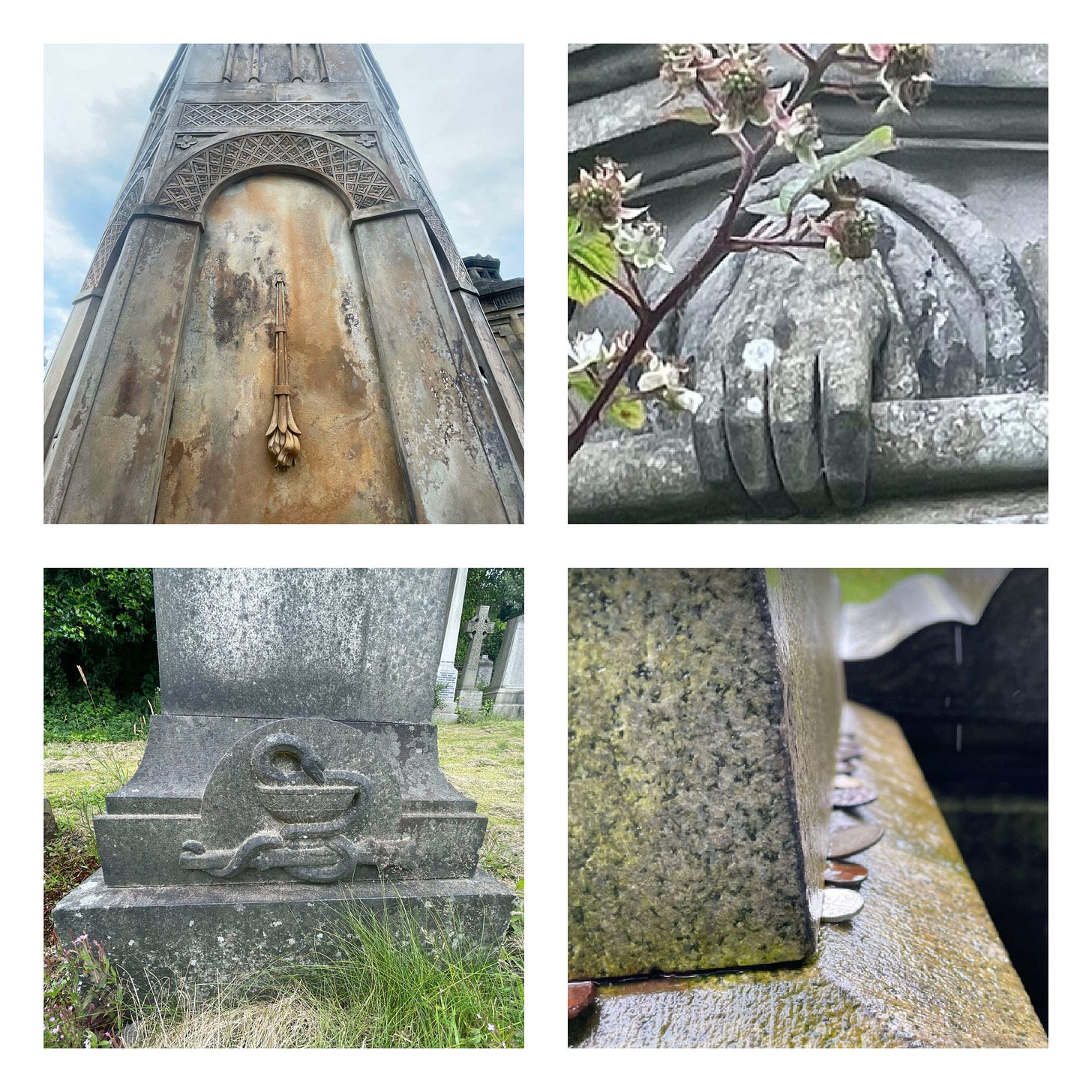The Bridge of Sighs - Looking out from the Necropolis over the Bridge of Sighs
I love a good wander through a cemetery. Almost everywhere I’ve visited in my life I’ve visited the cemetery - from lighting cigarettes and leaving oranges for my friend’s brother in a Shinto graveyard on a little Island in Japan, to the cemeteries of coastal Peru and some of the great cemeteries of Europe such as Père Lachaise, Londons Highgate and one of my favorites, and much closer to home, Glasgow’s Necropolis.
I like the word cemetery, it stems from the Greek koimētērion meaning ‘dormitory’, and from koiman meaning ‘put to sleep’ - its a dormitory of those eternally sleeping
Glasgow’s Necropolis cemetery was opened in 1833, its. It is a big site composed of 37 acres and is one of the most impressive cemeteries in Europe. Originally the site was thought of as being too rocky and hilly for development, but with the introduction of the Cemeteries Act of 1832, which allowed burials to be made for profit, and so those in charge saw this hilly and rocky site with new eyes.
The grand plan for the Necropolis was to take its inspiration from Paris’s impressive Père Lachaise. After approaching the Necropolis over the Bridge of Sighs the idea was that there would be underground catacombs which would eventually emerge out above ground. But the budget didn’t stretch that far and while the original semicircle remains (the gates painted a garish orange) with several single tombs.
As you wander through the cemetery you can very quickly see that this is a place that commemorates the rich and powerful. Among these grand monuments are carved Victorian death motifs, from the extinguished flame, positioned upside down, to the rarer use of serpents and funeral urns covered with tasseled cloths.
To the Victorians snakes symbolized eternal love, and while they are a rarer motif on headstones seemingly they were popular on rings- Queen Victoria’s engagement ring from Prince Albert featured a snake.
The coins inserted into the edge of the stone are a feature on the grave of ‘Gypsy Queen’ Corlinda Lee who was well known for her palm reading. It is said that she even read the palm of Queen Victoria, and folks today still leave a coin on her grave.
Keep reading with a 7-day free trial
Subscribe to Ancestral Mothers of Scotland & Gather the Keeners to keep reading this post and get 7 days of free access to the full post archives.






